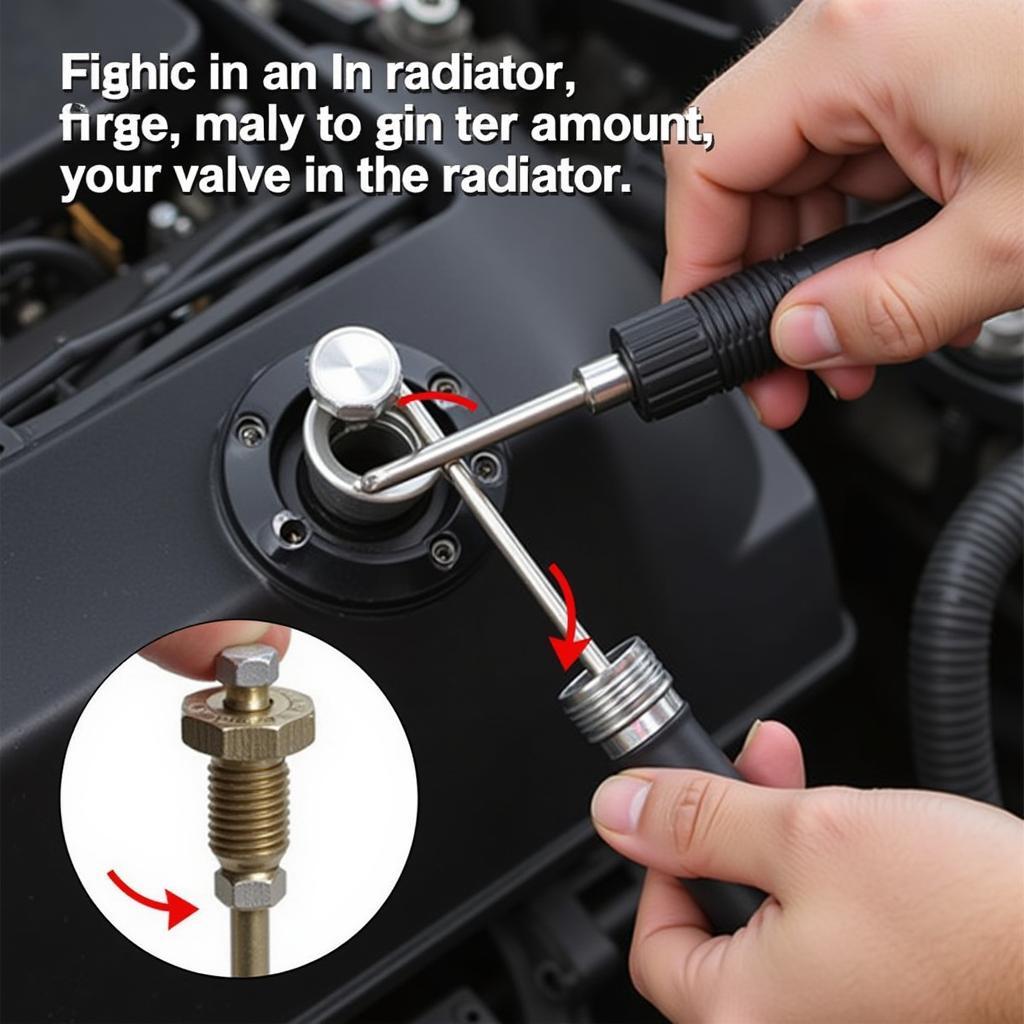Fixing a bleed valve on a car radiator is crucial for maintaining your car’s cooling system. A faulty bleed valve can lead to overheating, which can cause significant engine damage. This guide provides a comprehensive overview of how to diagnose and fix bleed valve issues, ensuring your engine stays cool and performs optimally.
Understanding the Radiator Bleed Valve
The bleed valve, often a small screw or valve located on the radiator or a nearby hose, allows trapped air to escape from the cooling system. When air pockets form, they disrupt coolant flow, leading to inefficient cooling. Knowing how to locate and use this valve is essential for proper car maintenance. If you’re struggling with a sagging headliner, you might find our guide on how to fix sagging upholstery car helpful.
Diagnosing Bleed Valve Problems
Before you start fixing anything, it’s crucial to diagnose the problem correctly. Signs of a faulty bleed valve include overheating, inconsistent temperature readings, and heater malfunction. Another symptom is a gurgling sound coming from the radiator. This indicates trapped air within the system.
Common Bleed Valve Issues
- Leakage: A leaking bleed valve can result in coolant loss and overheating.
- Clogging: Debris can clog the valve, preventing air from escaping.
- Damage: The valve itself can become damaged due to wear and tear or improper handling.
How to Fix a Leaking Bleed Valve
- Locate the Bleed Valve: Consult your owner’s manual for the exact location.
- Prepare the Car: Allow the engine to cool completely before working on the radiator.
- Inspect the Valve: Check for cracks or damage. If the valve is damaged, replace it.
- Tighten the Valve: If the valve is simply loose, carefully tighten it using the appropriate tool.
 Properly Tightening a Car’s Radiator Bleed Valve Over-tightening can damage the valve or the radiator.
Properly Tightening a Car’s Radiator Bleed Valve Over-tightening can damage the valve or the radiator. - Test the System: Refill the coolant and run the engine to check for leaks.
How to Fix a Clogged Bleed Valve
- Locate and Access the Valve: Similar to fixing a leak, locate the valve and ensure the engine is cool.
- Clean the Valve: Use a small wire or compressed air to carefully clear any debris.
- Flush the System: Consider flushing the entire cooling system to remove any remaining contaminants.
- Test and Observe: Refill the coolant and monitor for any recurring issues. If you’re dealing with wrinkled leather seats, check out our guide on how to fix wrinkled leather car seats blow dryer.
Replacing a Damaged Bleed Valve
- Drain the Coolant: Completely drain the radiator’s coolant.
- Remove the Old Valve: Carefully remove the damaged valve.
- Install the New Valve: Install the new bleed valve, ensuring a proper seal.
- Refill and Bleed the System: Refill the coolant and bleed the system according to your vehicle’s instructions. Need advice on repairing a tear in your car seat? Our articles on how to fix a tear in cloth car seat and can you fix a rip in leather car seat might help.
Expert Insight from John Miller, Automotive Engineer: “Always use the correct type of coolant for your vehicle. Using the wrong coolant can lead to corrosion and damage the cooling system.”
Conclusion
Knowing How To Fix A Bleed Valve On A Car Radiator is a valuable skill for any car owner. Regular maintenance and addressing issues promptly can prevent costly repairs down the road. By following the steps outlined in this guide, you can ensure your cooling system functions effectively and your engine stays protected. For further assistance or personalized guidance, connect with AutoTipPro at +1 (641) 206-8880 or visit our office at 500 N St Mary’s St, San Antonio, TX 78205, United States.
Expert Tip from Sarah Chen, Certified Mechanic: “Don’t forget to check your radiator hoses for cracks or leaks while inspecting the bleed valve.” If you have a small tear in your leather car seat, we also have a guide on how to fix small rip in leather car seat.




Leave a Reply